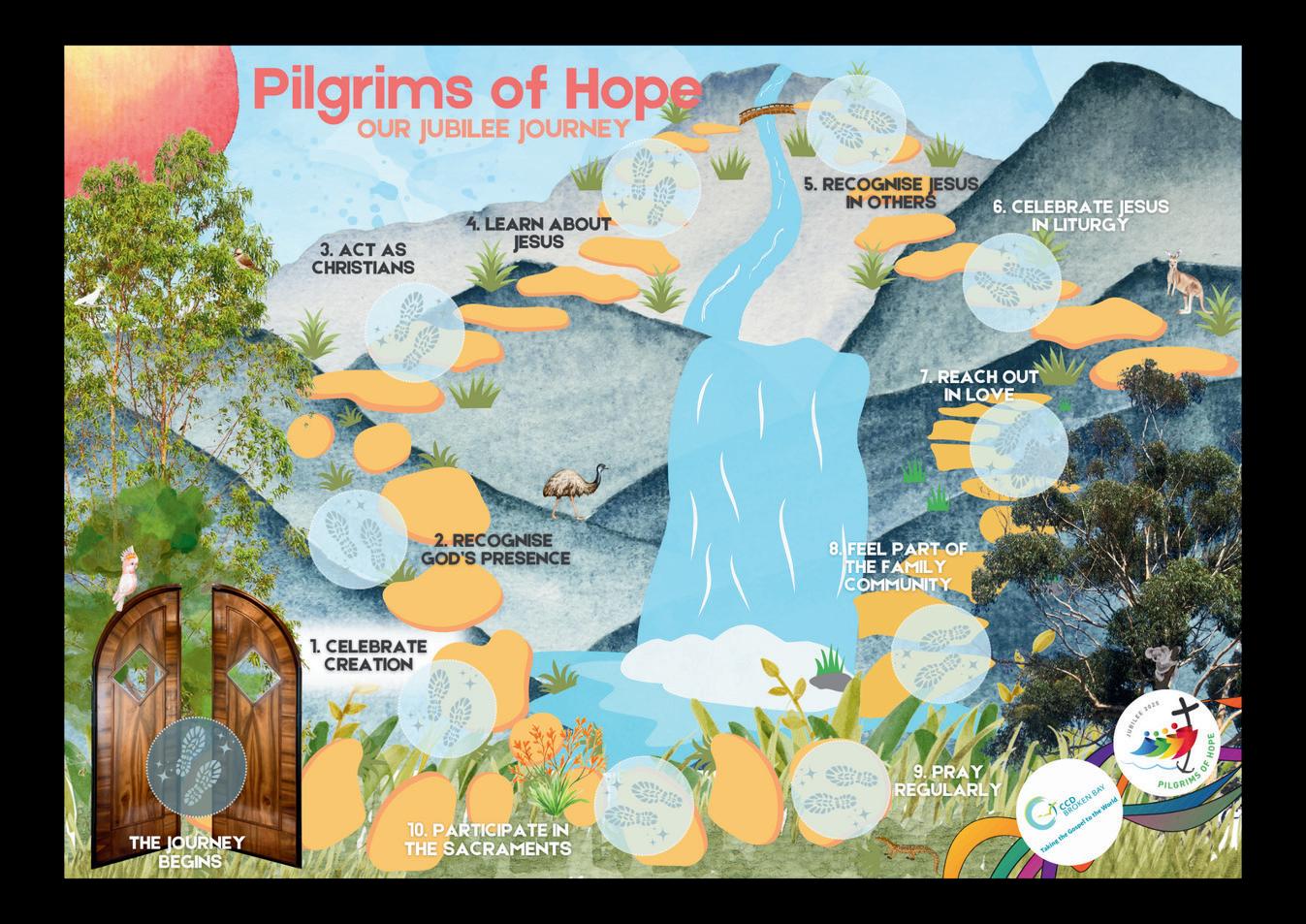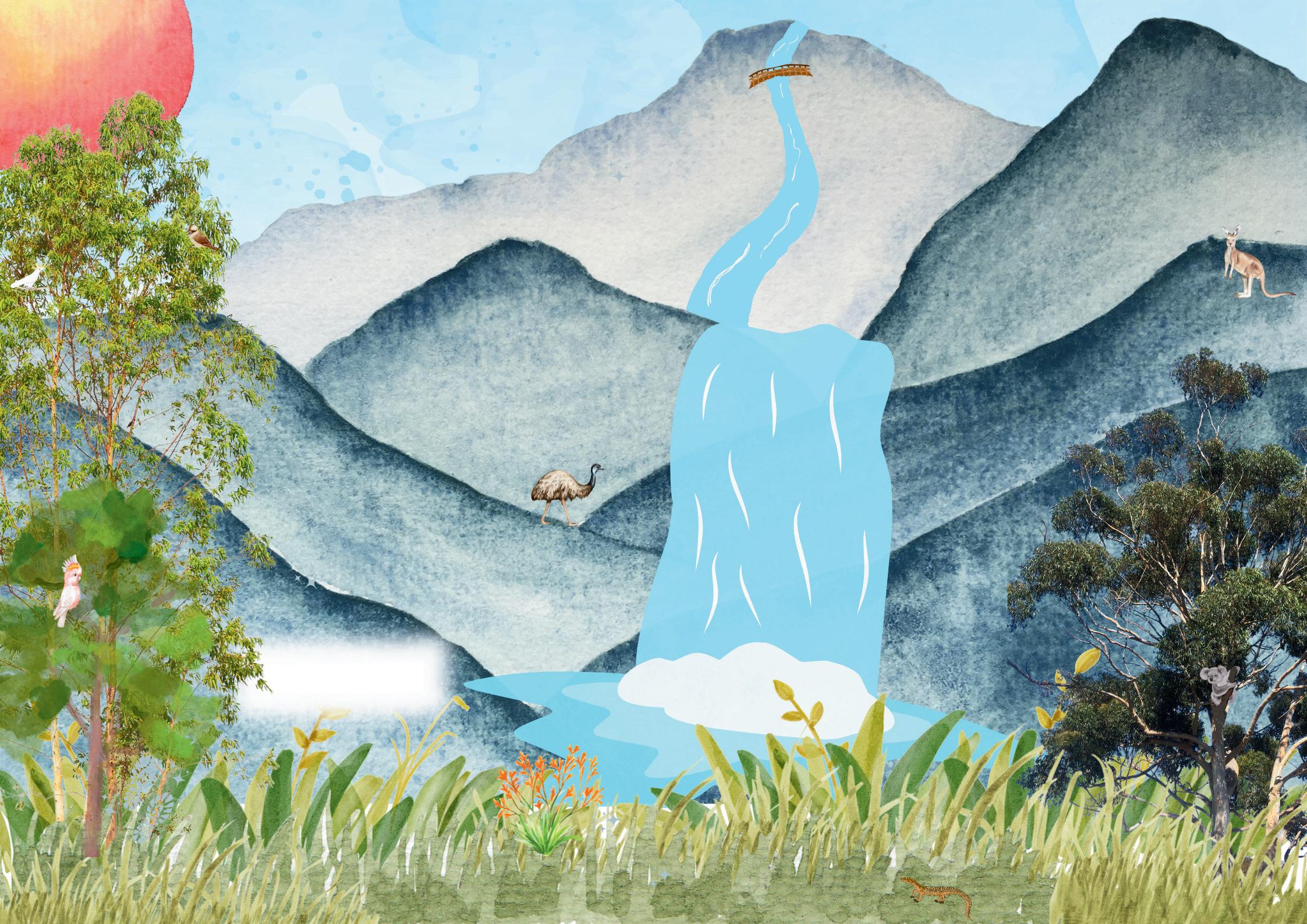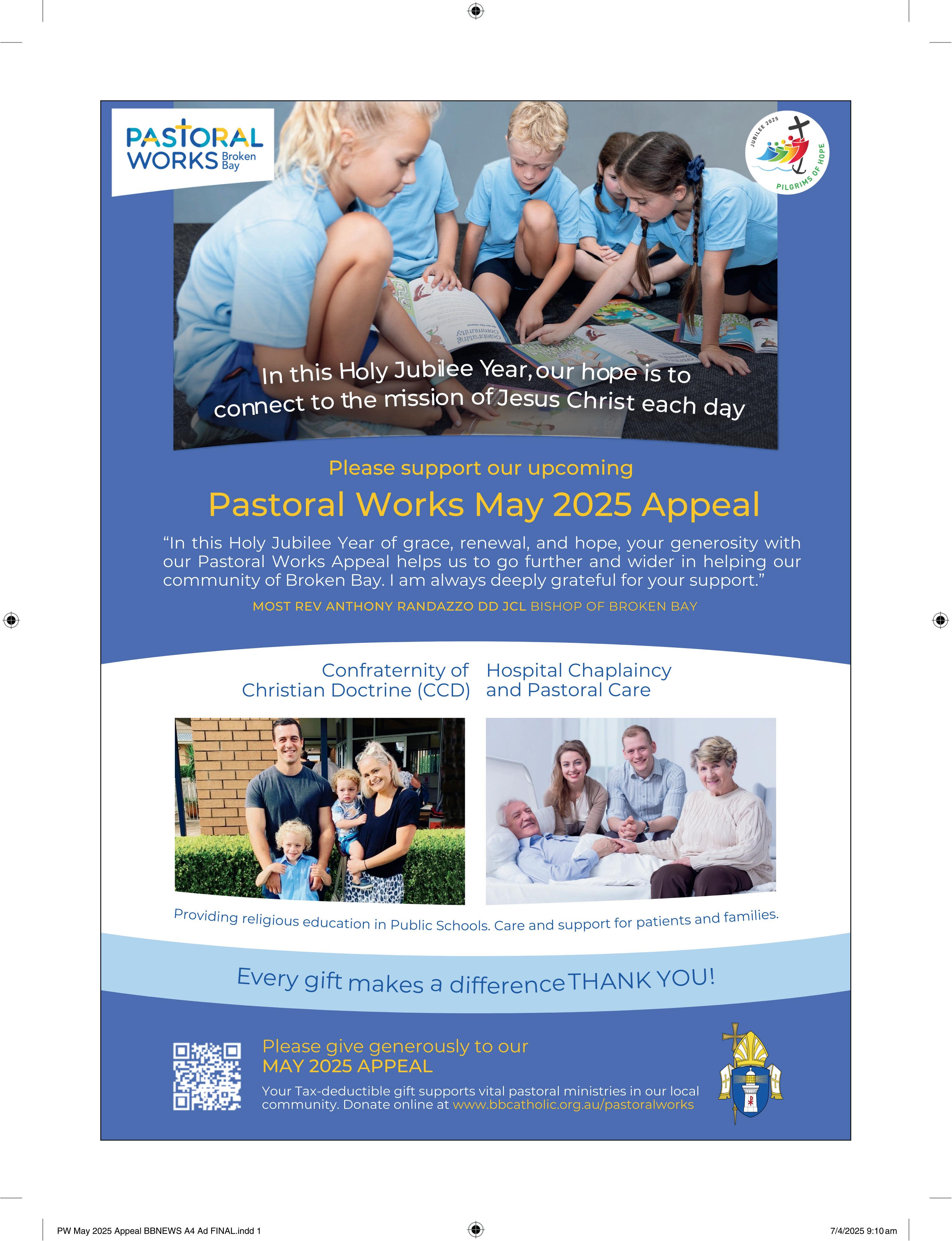












ALISON NEWELL
Head of CCD Broken Bay
P: 8379 1637
E: alison.newell@bbcatholic.org.au
MARICEL MALAPIRA
CCD Compliance Officer
P: 8379 1638
E: maricel.malapira@bbcatholic.org.au
KRISTY KOMADINA
North Shore Region
P: 8379 1674
E: kristy.komadina@bbcatholic.org.au
SUE-ANNE SHERWOOD
Northern Beaches Region
P: 8379 1639
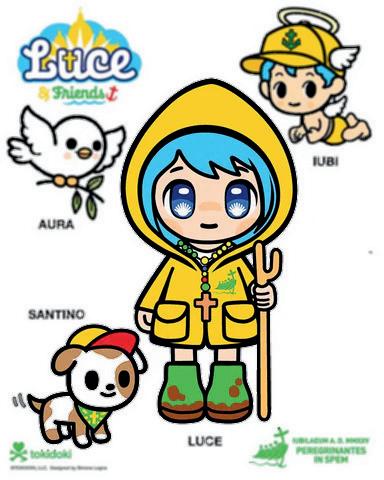


In our Christian life, we rejoice in the Risen Lord who is our hope. The season of Easter gives rise to new life and provides us with the opportunity to spread the joy of Easter in our SRE classes and breathe new life into the hearts and minds of the children and young people we teach. The privilege of the Ministry of SRE is that it allows us to serve as a bearer of hope to the students.
E: sueanne.sherwood@bbcatholic.org.au
JOHN DONNELLY
North Shore Region
P: 8379 1640
MICHAEL TEBBUTT
Central Coast Region
P: 8379 1641
E: michael.tebbutt@bbcatholic.org.au
ALICIA KLEIN
CCD Compliance Officer
P: 8379 1642
E: alicia.klein@bbcatholic.org.au
Registrations for CCD Training
P: 8379 1643
E: registrations@bbcatholic.org.au
WWJ Curriculum Resources
P: 8379 1642
E: ccdresources@bbcatholic.org.au

E: john.donnelly@bbcatholic.org.au instagram.com/ccdbrokenbay facebook.com/ccdbrokenbay
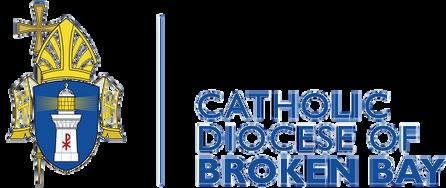
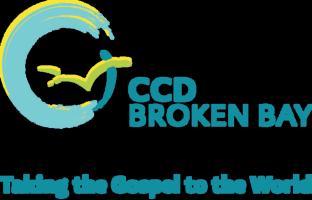
In these days, perhaps more than ever before, children and young people need to know the love of Christ. They need to know that they are loved immeasurably. Our teaching must deliver a message of love and forgiveness, of mercy and peace, and, of course, hope. Christian faith brings hope, and our students can be inspired with hope when you bring the love of the risen Lord into your classes.
In so doing, it is vital to model Christ’s love to them. When you see them, greet them with a huge smile. Model the joy that faith can bring into their lives through your example in the classroom. In his Apostolic Exhortation Evangelii Gaudium, Pope Francis tells us:
10. “…an evangelizer (catechist) must never look like someone who has just come back from a funeral! Let us recover and deepen our enthusiasm, that “delightful and comforting joy of evangelizing, even when it is in tears that we mustsow…Andmaytheworldofourtime,whichissearching,sometimeswith anguish, sometimes with hope, be enabled to receive the good news not from evangelizers who are dejected, discouraged, impatient or anxious, but from ministers of the Gospel whose lives glow with fervour, who have first received thejoyofChrist”.
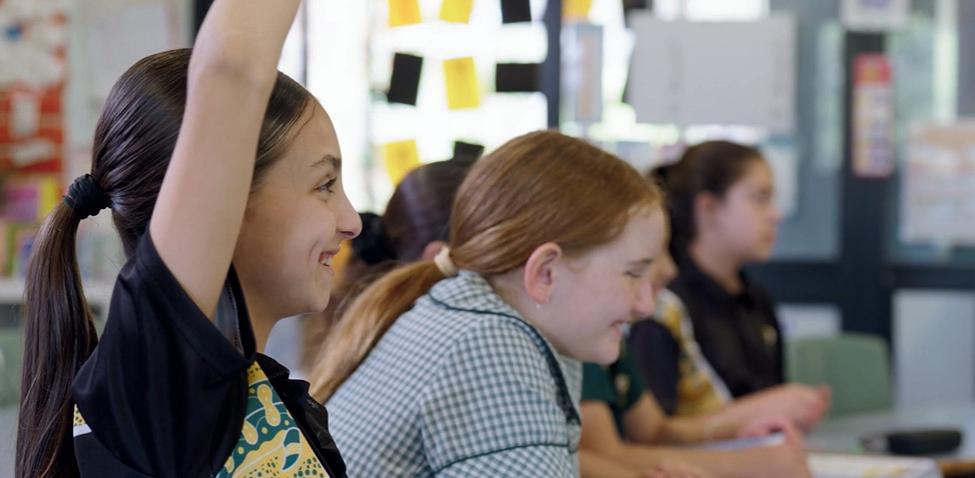

Encourage children to bring kindness and hope into their homes, their school and their friendship groups. Your witness to the joy and hope of the Gospel may be what inspires them.
One way of sharing the joy and hope of the Easter season is to brighten up your sacred space with white and yellow fabric, flowers, holy water, and a candle. Add some Easter eggs, which are symbol of new life. The story of Easter is the greatest story ever told. Let the students see your joy and sense your hope as you share this story with them.
To celebrate the Jubilee Year of Hope in our SRE classrooms, CCD has developed some simple resources which will allow you to have a “pilgrimage” in your classroom. See the article on page 15 of this edition of Connections for more information.
Many of you tell stories of seeing students outside of school, perhaps at church or the supermarket. When students acknowledge you outside of school, they do so because they feel connected with you in a spiritual sense. You are the face of Christ to them. You, the catechist, are a symbol of hope. We know from Matthew’s Gospel what Jesus thinks of children: Let the children come to me, and do not stop them; for it is to such as these that the kingdom of heaven belongs (Mt 19:14). May the Holy Spirit guide you as you bring the love, joy and hope of Christ to children and young people during this Jubilee Year of Hope.
I wish you and your families a very happy and holy Easter Season.

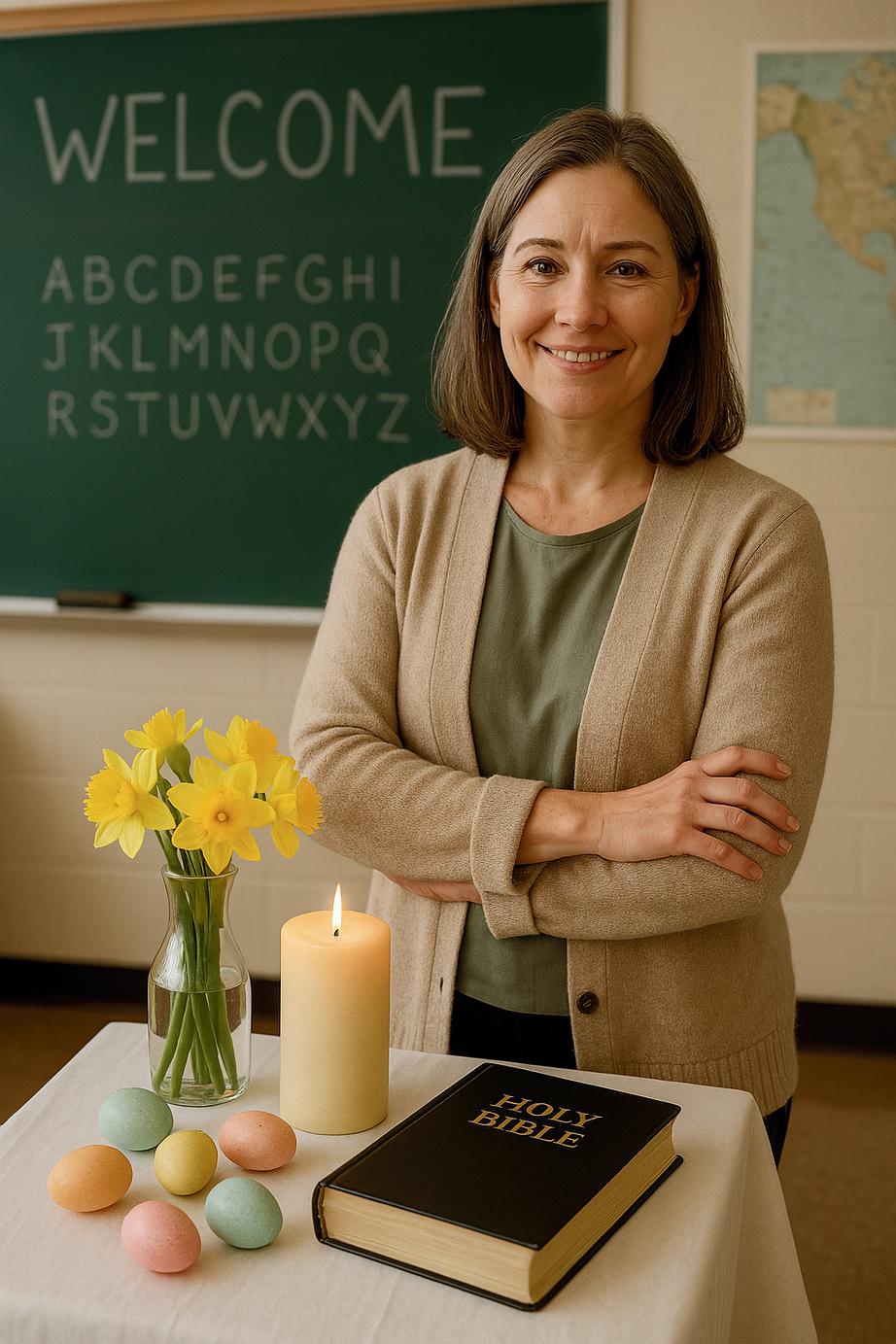


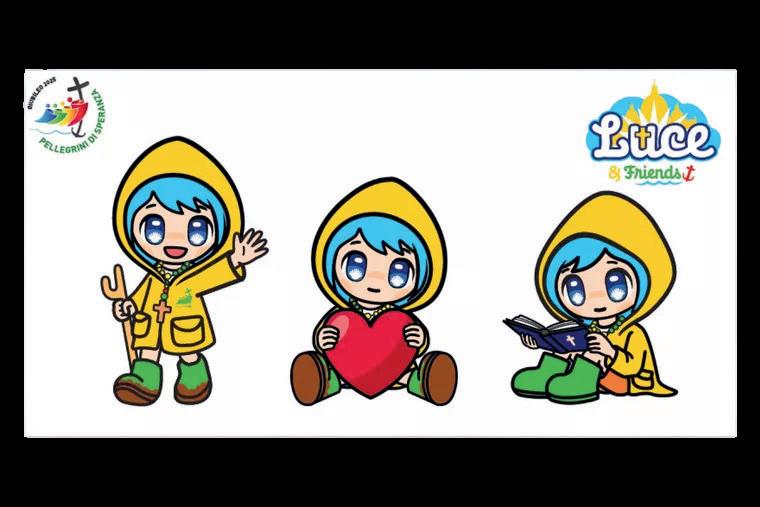
Our CCD Broken Bay website is a great resource for all catechists. We know that so many of you are using our website to download Lesson PowerPoints to enrich and enhance engagement during your lessons.
Did you know however, that there are many more useful resources that you can use in the classroom available on our website?
Bookmark:
https://www.bbcatholic.org.au/mission/ccd/curriculum/classroom-family-resources
so that you know exactly where you can download worksheets and puzzle pages from past editions of Connections and it’s also where you will find Family Supplement worksheets that you can use in class or send home with the kids.
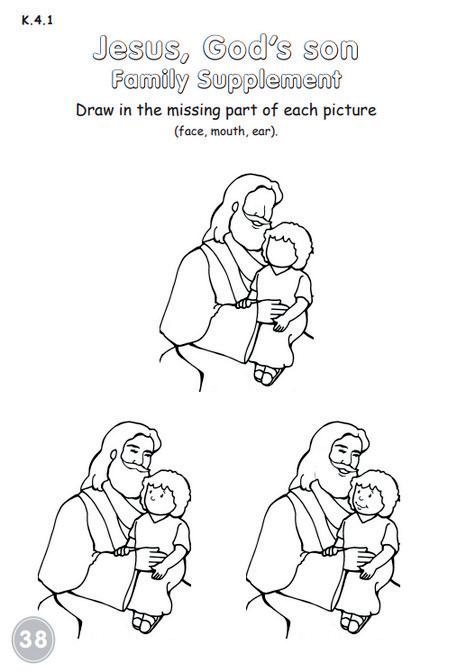

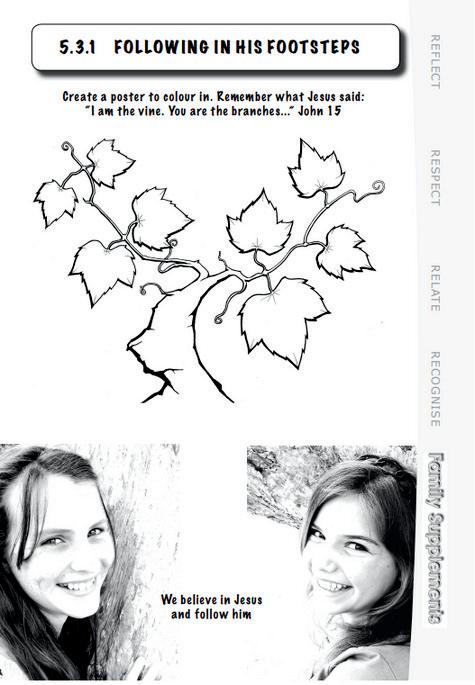
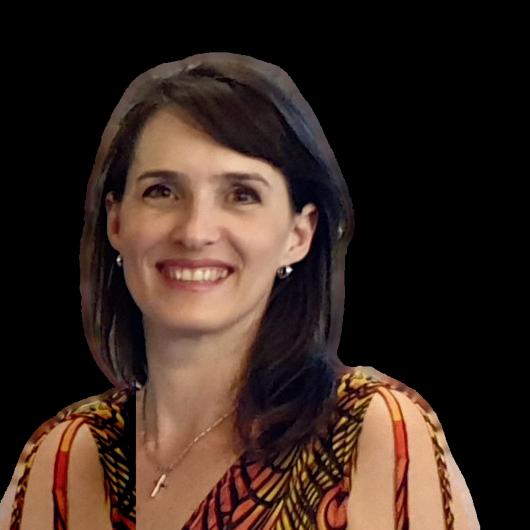
As the new Northern Beaches Regional Coordinator, I am excited to embark on this journey and serve you, the dedicated Catechists of that community. I look forward to connecting with you in the near future at our face to face training and Reflection Day. As I’m meeting with your Co-ordinators to hear more about your schools, your joys and challenges, it is wonderful to hear about the passion and commitment each of you brings to the mission of passing on the faith. Thank you for the welcome.
I would like to take a moment to acknowledge my colleague, John, who is now serving in the North Shore Region. In his time as the Northern Beaches Regional Coordinator, he was a wonderful support to all the catechists. Everyone I’ve spoken to has spoken highly of the way he nurtured the community and provided guidance with such dedication and care. I am grateful for the strong foundation he has left, and I am committed to continuing his great work. I have so enjoyed serving the North Shore Region, thank you, and know that you are in very good hands with John now.
Term 2 promises to be an exciting time of growth and collaboration, and I am particularly looking forward to the upcoming training sessions and workshops. These initiatives are designed to deepen our knowledge and strengthen our ability to serve our students with joy and compassion. The level 1 Teaching Strategies are really good, practical classroom strategies, ideas and experiences which will advance your teaching skills.
You, Catechists play a crucial role in fostering the faith of our young people, and I am deeply grateful for all the work you do. I love seeing how you support one another, share insights, and pray together as we grow in our mission to bring the light of Christ to those we teach. God Bless you, all.


As we journey through the Jubilee Year of Hope, we are reminded of the enduring power and promise of Jesus’ resurrection. The post-resurrection accounts of Christ are rich with hope - hope that triumphs over despair, that renews and restores, and that calls us into a deeper relationship with Him. For us as Catechists, these accounts serve as both an inspiration and a mission.
Catechists play a vital role in carrying the light of the risen Christ to the hearts of children in public schools across New South Wales. Through Special Religious Education, we step into classrooms not just as teachers, but as witnesses to the transformative power of faith. We have the privilege of sharing the Good News with students who may be encountering it for the first time, offering them the hope and love found in Jesus.
In this Jubilee Year of Hope, our mission is particularly significant. Just as Jesus called His disciples to go forth and proclaim the Gospel, we too are called to embody and share His message of hope. The work we do as Catechists sows seeds of faith, nurtures young hearts, and inspires future generations to walk with Christ.
I am thrilled and excited about our Pilgrims of Hope pilgrimage kits being used in classrooms across our diocese. It’s not always easy to physically travel to churches and visit pilgrimage sites, but what I really like about the challenges we have set is that we’re really raising the bar to become disciples of Jesus in ways that are within our reach. Most children will be able to do one small thing every week or fortnight that brings them closer to Jesus and my hope is that by the end of their Jubilee Journey, they will feel a sense of achievement and peace.
Happy Term 2! Christ is risen, and with Him, we share in the unshakable hope of new life.

We are beyond grateful for the new people who have recently joined this ministry. When I ran out of manila folders for the paperwork I receive from different parishes, I took it as a good sign! I simply love the days when I prepare and post the CCDMI booklets to those who will be attending the Ministry Induction training sessions. My work is always delightful when I think about you stepping forward to teach SRE in state schools. We hoped and prayed for people like you—offering your time to serve Catholic students.
In this Jubilee Year of Hope, let me share with you the popular story about the villagers who decided to pray for rain. Everyone gathered, but only one boy came with an umbrella. This story is often used to illustrate the concept of faith, trust, hope, confidence, love, and positivity.
Life inevitably presents challenges, but embracing them with a positive mindset, resilience, and a willingness to learn and grow can lead to personal strength and fulfilment. Hope plays a big part in cultivating that positive mindset.
Most of us, before going to sleep at night, will set an alarm. The saying “setting the alarm is hope” encapsulates the idea that despite the uncertainty of the future, we continue to plan for and anticipate the next day—this, too, is a manifestation of hope.
As catechists, let us share and promote optimism and encouragement in the face of challenges by offering kindness, support, and uplifting messages to everyone we meet.
Let HOPE be contagious in our ministry—by inspiring and motivating others to believe in a brighter future with God.
I look forward to seeing you face-to-face at one of our Reflection Days or training sessions.
Sue-Anne Sherwood NORTH SHORE COMPLIANCE OFFICER
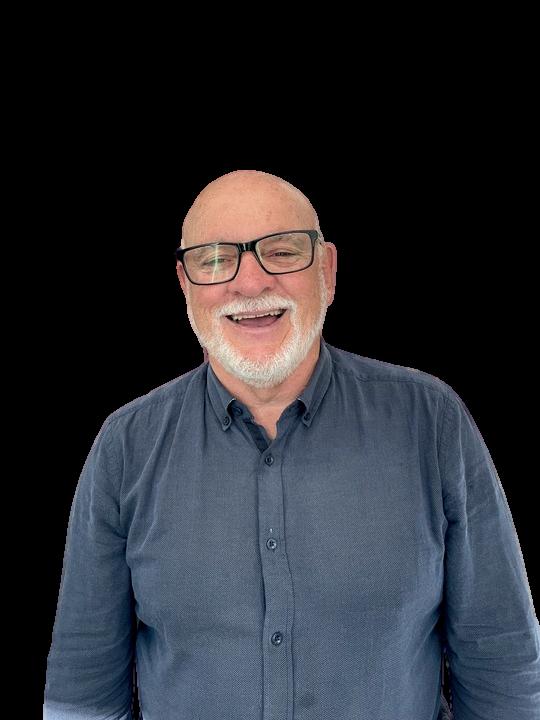
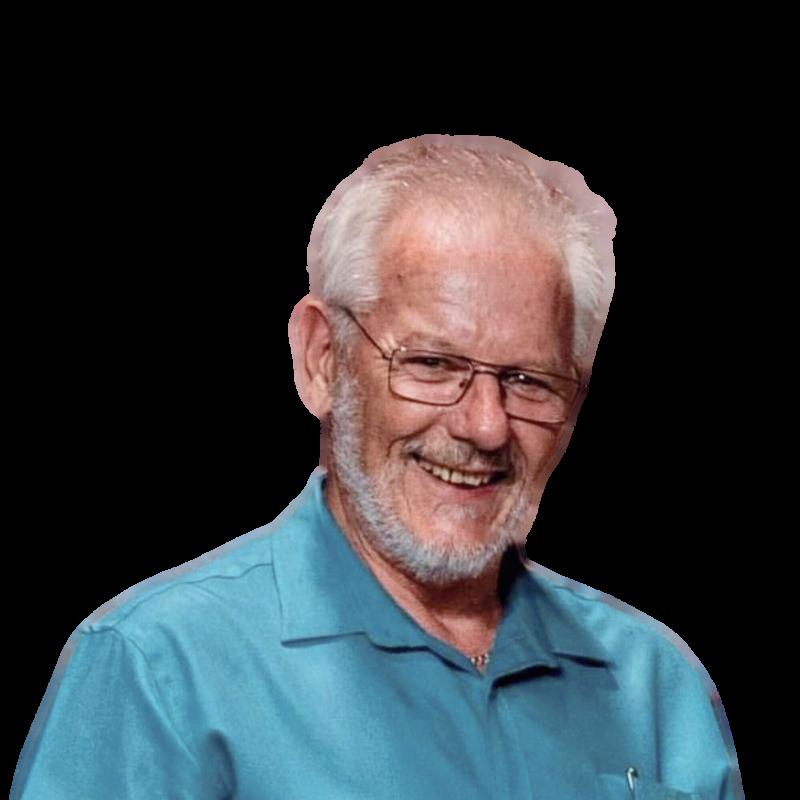

Since the last edition, I have been moved from the Northern Beaches to the North Shore region. My role has not changed but I will be serving a different group of parish coordinators and catechists and working in close partnership with Kristy Komadina.
Since returning to Broken Bay in 2020 I have had the pleasure of working with the parish coordinators and catechists down on the beaches. There have been many meetings, training sessions and visits in the region from French’s Forest down to Manly Freshwater and across to Mona Vale/Avalon. It has also been wonderful to visit many schools across the region and meet the happy students in Catholic SRE classes.
As I transition to retirement by working three days a week for the diocese it has been appropriate that my workload is adjusted and the parishes I am allocated to serve be reduced. In the last two months I have begun to get to know the parish communities from Epping Carlingford to Arcadia, through Pennant Hills into Hornsby and Berowra. It has been great getting to know new people and reacquaint with those who are familiar.
One of the benefits of working in a small team like CCD Broken Bay is we have many opportunities to partner and share with each other. As a result, we are familiar with the strengths and challenges of each parish as well as the demands of the SRE Ministry. There is also room within our team for individual gifts, talents and style to be employed, so cooperation and collaboration is key.
Working in the Northern Beaches has been a time of great enjoyment and learning for me and I appreciate the way the coordinators of the region have worked with me. The welcome to North Shore has been very encouraging and I look forward to meeting the needs of the parish coordinators and catechists at this time.
John Donnelly
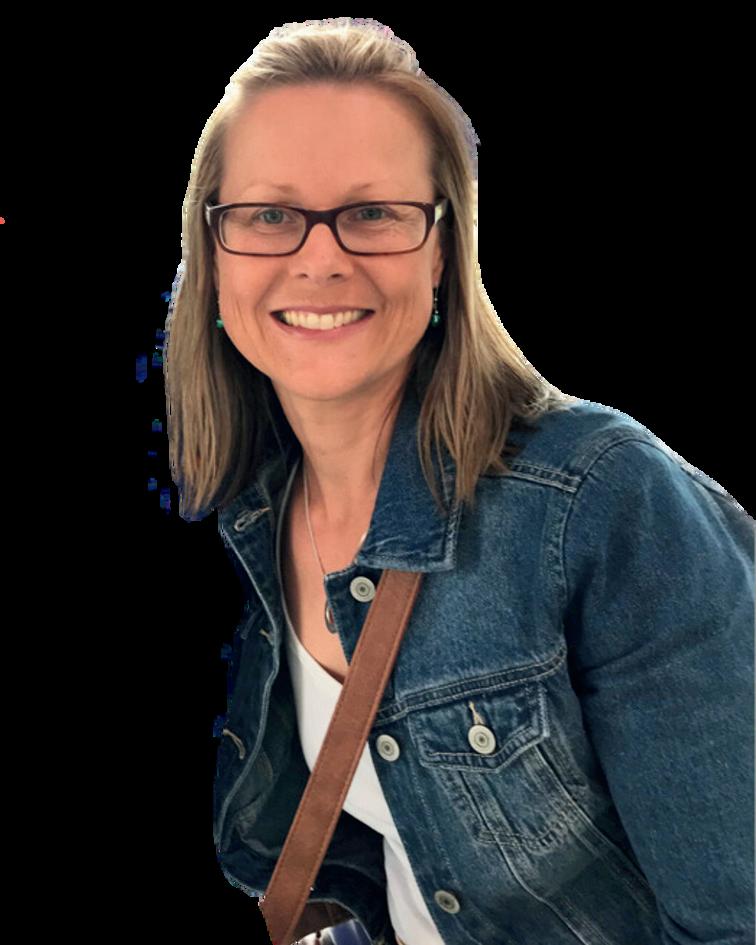
As the vibrant Easter season unfolds, leading us towards the hopeful horizon of Pentecost and this special Jubilee Year of Hope, I find myself reflecting once more on the true breadth of Easter. Last year, I shared my awareness of how easily the children we teach, and perhaps even ourselves, can confine Easter to just that single, glorious Sunday. But the joy of the Resurrection doesn't end there!
This year, as we journey through these Easter weeks, let’s truly immerse ourselves in the encounters the disciples had with the Risen Christ. Imagine their wonder, their lingering doubts, and then the profound recognition –whether in the breaking of bread, a familiar voice by the sea, or the unfolding of scripture. How often do we pause in our own daily lives to recognise that same risen Lord present amongst us?
This Easter season, I encourage us all to actively seek out those moments of encounter in our everyday – the unexpected kindness, the beauty of creation, the shared moments of community. Let these be our opportunities to give thanks for Christ's enduring presence.
In this Jubilee Year of Hope, a wonderful opportunity for deeper reflection and connection awaits us. I warmly invite you to our upcoming Reflection Days, centred on the powerful theme of the Stations of the Resurrection. These days offer a precious chance to step away, to nourish our spirits, and to contemplate Jesus’ post-Resurrection journey. It’s a time to gain renewed inspiration for our vital work as Catechists.
Beyond personal reflection, these days are also a wonderful opportunity to connect with fellow Catechists from across Broken Bay, sharing experiences and building supportive bonds. This year, we also extend a special invitation to your friends and family to join us in this enriching experience. Let us embrace this Easter season fully, carrying the hope of the Resurrection into our hearts and our classrooms.
Michael Tebbutt

We’ve been busy organizing several events and projects for Term 2. We’re excited to share with you our Level 1 ‘Tools for the Classroom’ course. It’s an optional course covering the topics ‘Prayer in the Classroom’, ‘Miracles & Parables’, and ‘Listening & Questioning’ on Zoom, and culminating in a full-day face-to-face Workshop on ‘Music, Stories & Drama in the Classroom’. The first of the sessions will be held on 28 April, so contact Registrations as soon as possible to register.
In May, we’ll be holding Reflection Days with the theme ‘Stations of the Resurrection’. Join us at Chatswood on Friday 9 May or The Entrance on Monday 19 May. All catechists are welcome and you may bring a friend. Registrations are essential.
Those of you with Provisional Authorisation (Yellow) cards, I’m here to help you complete CCD Ministry Induction training so please reach out if you need any assistance. I’ll be in touch with details of the Term 2 course.
Details of our training and formation opportunities can be found on our website at
https://www.bbcatholic.org.au/mission/ccd /training-and-events-calendar
We’re excited to share our ‘Pilgrims of Hope’ resources to mark the Jubilee Year of Hope. Your Parish Catechist Coordinator will distribute posters, stickers and bookmarks for you to use in the classroom. We hope you enjoy sharing these with the children in your SRE classes.
We’ve added more Quizzes to our collection of Powerpoint lessons. Click here to access them:
https://www.bbcatholic.org.au/mission/ccd /curriculum/walking-with-jesuspowerpoint/walking-with-jesus-powerpoints
Wishing you all a wonderful Term 2.
Alicia Klein


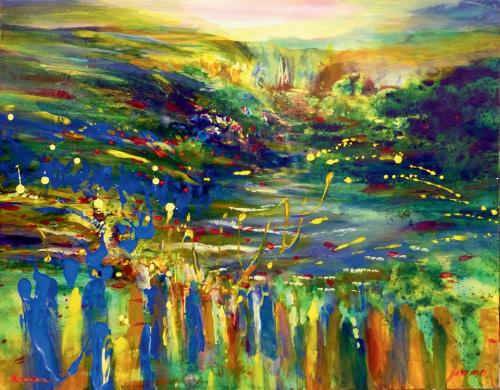
The Church is called to be a new community that marks the kingdom of God breaking into the world. We, the Church, are called both to proclaim and enact the certain hope of our salvation in the future, seeking to show what the promised restoration will look like in our present reality.
One of the things that prophets do is bump people out of that sense that ‘this is normal, this is natural, this is all there is’, by saying ‘well actually, this could be pulled down and we could set up that’. Part of the job of the Church is to be alert to those prophetic voices, to lift them up, let other people hear them –and that itself is a prophetic voice. If imagination doesn’t change, nothing changes. Merryl Blair

Jubilee reminds us that God expects the Church to challenge worldly imperfection through their relationships with each other and the pursuit of justice – through social and legal provision (as enshrined in the Law for Israel), and through personal action and interaction, including generosity and sacrifice (as in the instruction to the disciples). The gift of the Spirit empowers and enables us to be a part of God’s mission to reset all areas of life, bring release and restoration.
Jubilee must have exposed human greed and brought out the selfishness in society. The law didn’t have the capacity to change those things, it only showed it. But God said... I will pour out my Spirit upon you and the law will be written in your heart.
CB Samuel
As a faith community today, we need to translate this law. As people who walk in the Spirit and love God and love our neighbour, many of our life expressions are found in the Bible. A Spirit-filled, discipleship-oriented Church does care for the poor because that’s all in the year of Jubilee.
The essence of Jubilee is God’s inspired vision to interrupt the status quo. A reset, embedded in the way of life for God’s redeemed and liberated people, emphasising the relationships between humanity, creation and God. Within the reality of life in a world of broken relationships, Jubilee is an expression of God’s desire for all of creation to flourish. It is radical and countercultural and it is prophetic – then and now. The Jubilee Year is a model for a community living well, according to God’s will, so that everyone can thrive as individuals and as a community and, in so doing, shine as light to the rest of the world.
In ancient Judaism, the Jubilee Year (which was called the year of the yōbēl, "of the goat", (because the holiday was proclaimed by the sound of a goat's horn) was a year that was declared holy. During this period, the Mosaic law prescribed that slaves could regain their freedom, and that land, (of which God is the sole master), should be returned to its former owners. A jubilee year was typically celebrated every 50 years.
In the Christian era, after the first Jubilee of 1300, Pope Boniface VIII fixed the frequency of Jubilee celebrations to every 100 years. Following a plea from the people of Rome to Pope Clement VI (1342), the frequency was reduced to every 50 years. In 1389, in remembrance of the number of years in the life of Christ, Urban VI chose to set the Jubilee cycle to every 33 years and called for a Jubilee in 1390—though it was only celebrated after his death by Pope Boniface IX.
Despite this, in 1400, at the end of the previously fixed 50-year period, without having declared a Jubilee ahead of time, Boniface IX granted a Jubilee indulgence to the pilgrims who had flocked to Rome.
In 1425, Martin V celebrated a new Jubilee, opening the holy door of St John Lateran for the first time. The last to celebrate a Jubilee on the 50-year cycle was Pope Nicholas V in 1450.
Pope Paul II extended the inter-jubilee period to 25 years, and in 1475 a Holy Year was celebrated by Sixtus IV. From then on, ordinary Jubilees were held at regular intervals. Unfortunately, the Napoleonic wars prevented the celebrations of the Jubilees of 1800 and 1850.
The Jubilees were resumed in 1875, although that year it was celebrated without the traditional solemnity. Pius IX was able to proclaim a Jubilee on 24 December 1874 with the Bull Gravibus Ecclesiae. In 1900, Leo XIII proclaimed the Universal Holy Year. The aim for this Holy Year was to “meet the twin challenges of the modernisation of Christian life and the Christianisation of modern life.”
Pope Pius XI proclaimed the Jubilee Year of The Infinite Mercy of God which gave an impetus to missionary activity around the world. In 1933, Pius XI proclaimed an extraordinary Jubilee.
The Holy Year of 1950 was by proclaimed by Pius XII and the dogma of the Assumption of the Blessed Virgin Mary into Heaven was proclaimed.
In 1975, Paul VI dedicated the Jubilee Year to reconciliation. This was the first Jubilee to be broadcast worldwide and saw the lifting of the excommunications with the Church of Byzantium and the participation of the Patriarch of Alexandria Melitone.
1983 saw St John Paul II proclaim the Jubilee to celebrate the 1950th anniversary of the death and resurrection of Jesus and in 1998 the same pope proclaimed the Great Jubilee of the Year 2000. One of the main events of the Jubilee was the holding of World Youth Day in Rome where more than two million young people participated. The Pope also made several pilgrimages, including one to the Holy Land, encouraging dialogue between the Catholic Church, Islam and Judaism.
In April 2015, Pope Francis declared a Jubilee for the 50th anniversary of the end of the Second Vatican Council. The Jubilee was dedicated to mercy. On 9 May 2024 Pope Francis proclaimed an Ordinary Jubilee of the Year 2025 with a theme of Hope.
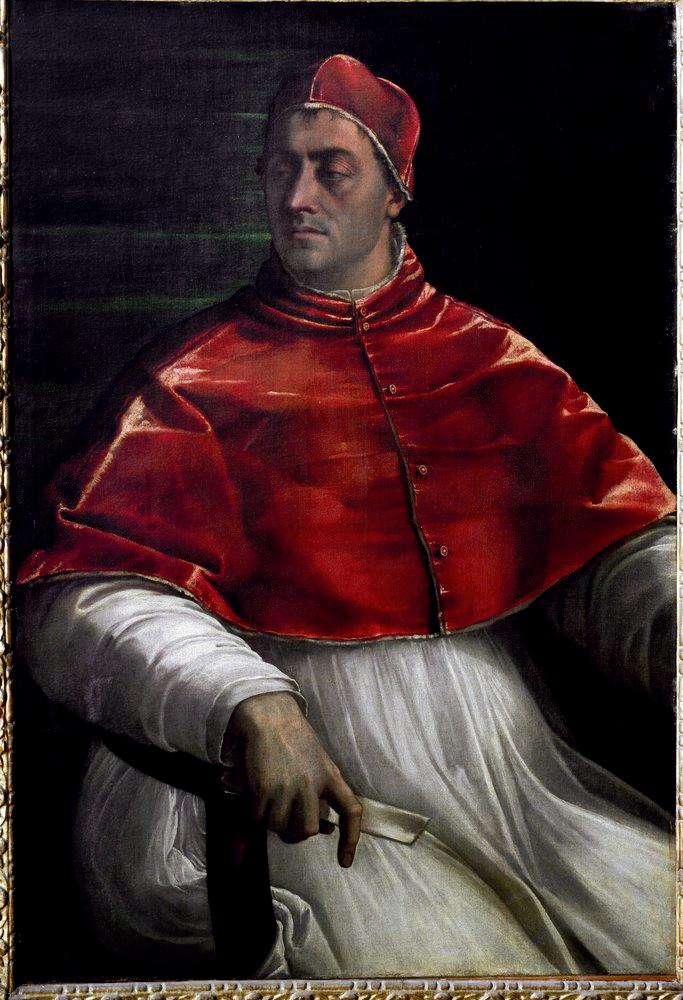
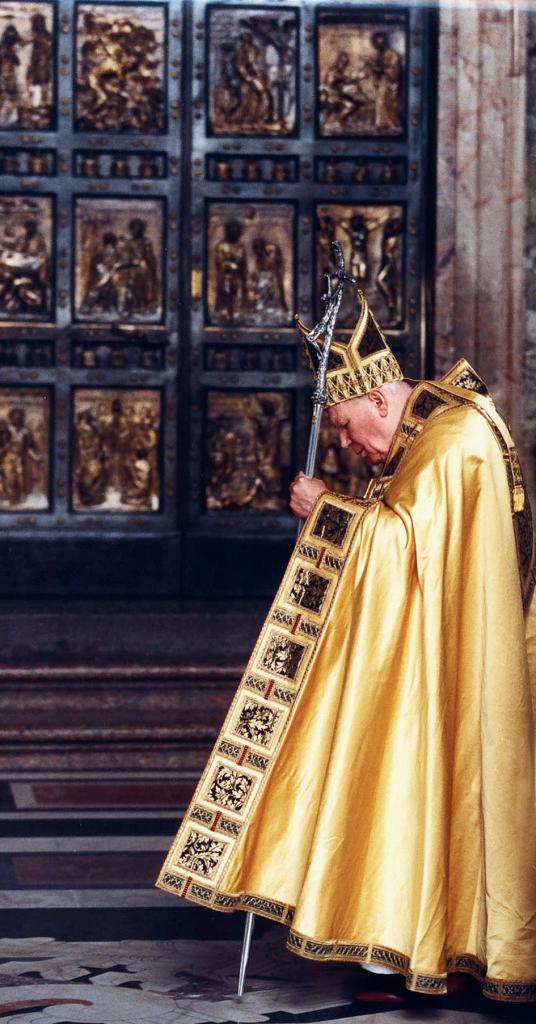


ACROS S 2. Something we read 3. What Mary gives to people 4. St. John Bosco was one 6. A place where kids learn 7. What St. John Bosco was to children 8. How we feel when we do good 10. J esus’ mother 13. Something we do in church 14. What God gives us DOWN 1 . Son of God 2 . Saint who loved children 5 . A place to pray 9 . Talking to God 11 . A messenger from God 12. St. John Bosco worked with them


CODE:
SECRET MESSAGE
St. John Bosco taught young people to trust in Mary Help of Christians. Below is a secret message inspired by his teachings. Use the code to reveal the message!
Letter-to-Number
Code: A = 1, B = 2, C = 3, D = 4, E = 5, F = 6, G = 7, H = 8, I = 9, J = 10, K = 11, L = 12, M = 13, N = 14, O = 15, P = 16, Q = 17, R = 18, S = 19, T = 20, U = 21, V = 22, W = 23, X = 24, Y = 25, Z = 26

Decode This Message: 13-1-18-25 8-5-12-16-19 21-19 1-12-23-1-25-19!
Write your answer here:
St. John Bosco, who founded schools for children, strongly promoted devotion to Mary Help of Christians, believing she provided powerful protection and guidance to those who asked for her help, and built a basilica in her honour.


“THE EUCHARIST IS MY HIGHWAY TO HEAVEN”
It’s now over 20 years since CCD first began offering Safeguarding/Child Protection training to all SRE catechists. During that time our training has evolved to ensure that we are always aligned with current legislation and safeguarding practices.
In February 2022, new laws were introduced to create the NSW Child Safe Scheme. The laws aim to make sure that child-related organisations are doing everything they can to keep children safe from all kinds of abuse. The Child Safe Scheme is based on 10 Child Safe Standards. These Standards aim to promote child safety and help prevent, detect and respond effectively to harm and abuse if it occurs. The Standards work by driving change in culture and leadership in organisations so:

Child safety becomes central to everyday thinking and practice, and the best interests of children are always prioritised

Child abuse is never tolerated, and everyone understands they have a role to play in creating a safe and supportive environment

Concerns about child safety are taken seriously and everyone is empowered

The Diocese of Broken Bay has embedded these Standards into its practices. CCD has adopted these Standards as a benchmark for our work in safeguarding and child protection, which allows us to support you the SRE catechist as you go about your ministry.
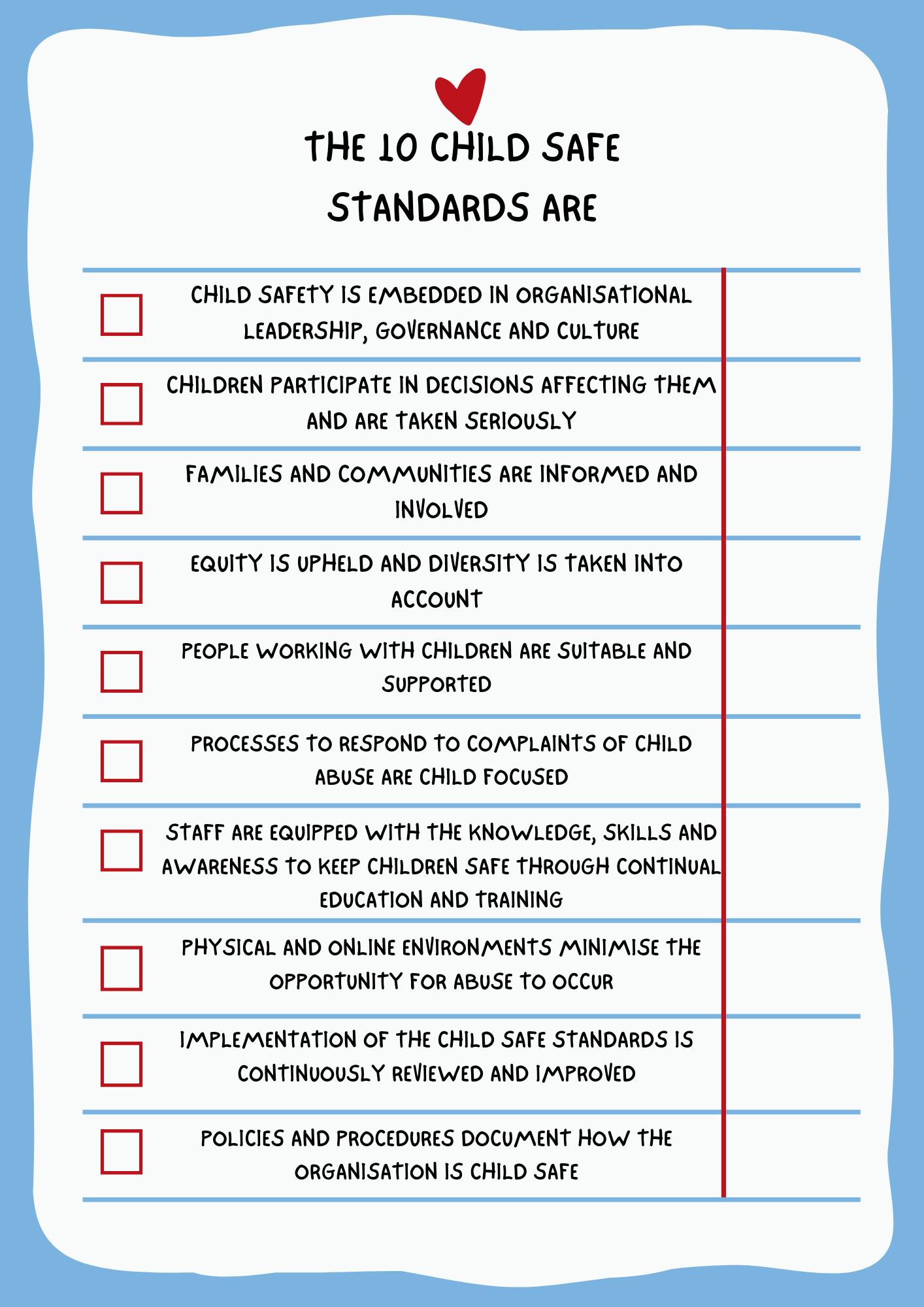
It’s our privilege at CCD to support you in this wonderful and important Ministry of Special Religious Education and to work together as disciples of Jesus to make Safeguarding a priority. We can’t do this alone. Collectively, let’s keep children, young people and vulnerable adults safe in our families, schools and communities
We’re all in this together!!!
Please don’t hesitate to contact me at any time if you have any questions or concerns of a safeguarding/child protection nature.
Alison Newell




On the 19 of March, the Legislative Council met and Rachel Merton MLC introduced a motion supporting Special Religious Education in NSW Government Schools.
th The motion stated:
(1) That this House notes that:
(a)special religious education [SRE] programs are integral to the moral and spiritual development of students, teaching about faith, ethics, tradition and values;
(b)SRE programs benefit young Australians, as they are taught to foster tolerance, respect, understanding and other key values; and
(c)volunteers are central to the delivery of the SRE program in the school environment and their service is commendable.
(2) That this House acknowledges that:

It is worth reading the comments of the Courtney Houssos, Susan Carter, Chris Rath, Scott Farlow and Sarah Mitchell. Particularly the comments of Susan Carter who states that she has been an SRE teacher herself in the past.

(a) on 12 November 2024 in the Parliament of New South Wales, an occasion was held to celebrate the importance of SRE in New South Wales;
(b) Deputy Premier and Minister for Education, the Hon. Prue Car, MP, and shadow assistant Minister for Education, representing the shadow Minister for Education and Early Learning, Matt Cross, MP, addressed the large gathering; and
(c) the event received bipartisan support and attendance from members of Parliament, including the Hon. Mark Speakman, SC, MP, the Hon. Susan Carter, MLC, Mr Tim James, MP, Mrs Sally Quinnell, MP, and the Hon. Rachel Merton, MLC.
(3) That this House recognises the SRE program as being an integral part of the education environment in New South Wales.
The motion passed the MLC at a vote of 28 to 6.
You can watch The Hon. Rachel Merton's presentation of the motion to the MLC here:
click on the link (digital version)
scan the qr code with your phone (print version)
SRE can so often be characterised as a program that is 'under threat' or 'will be as good as long as it lasts' or even "perhaps not around much longer."
However, as a vote of 28 in favour and 6 against SRE demonstrates, NSW Government support for SRE remains very strong.
If you have never spoken to corresponded with your local member or parliament or a member of the Legislative Assembly, take the opportunity to speak to them about the importance of SRE and how much you and the local community values their support of SRE.
Tom Eastlakes is the Executive Officer of ICCOREIS (Inter-Church Commission on Religious Education in Schools NSW Inc.). ICCOREIS represents various Christian denominations in NSW, supporting and promoting quality Special Religious Education (SRE) in government schools.



At the recent Synod for a Synodal Church, I not only had the unimaginable privilege of being called by Pope Francis to participate as a Non-Bishop Member, but I had the sacred grace to journey alongside several of the most inspiring leaders in our Church. I was particularly blessed to form a strong bond of friendship and collaboration with a group of Members from around the globe, whom I resided with during both month long stays in Rome. At first, we jokingly named ourselves the “Synod periphery”, given our accommodation was quite a distance away from St Paul the VI Hall where Members met daily. Our reference to the periphery also reflected the local Churches we each represented. From Seychelles to Trinidad and Tobago, Malaysia to Papua New Guinea, Fiji, New Zealand and Australia, we were all diversely removed from the Roman experience of the Church; – Together, our little group accompanied each other daily, beginning with early morning Mass, through to late evening dinners where we would debrief the conversations of the day. We shared countless laughs, shared stories of our lives, and most significantly we discussed what our Synod experience would mean when we returned home. This wonderful group of eleven – men, women, laity and clergy, a Bishop and an Archbishop – became my Synod family.
Amongst the greatest gift of this Synod has been the process, and the witness of its effectiveness. God created us to be relational – with Him as our Creator, and with us to accompany each other. This intentional relationality has been the premise of each encounter of the Synodal process, availing the time and space to listen intently to the Holy Spirit, as heard in the Word of God, and through each other. These encounters enabled listening and sought understanding in dialogical movements between the local and universal Church. Together we discerned how best to proclaim the Gospel message throughout the world.
Over many a meal with my Synod family, we would discuss how best we could take this message home. Foremost in our sharing was the way we could give voice to this incredible experience and joyfully draw others into this way of being Church. We identified four key marks of a Synodal Church to help us not only explain this reality, but to provide a framework to enable further synodal growth. A Synodal Church is relating, listening, discerning and selfemptying.
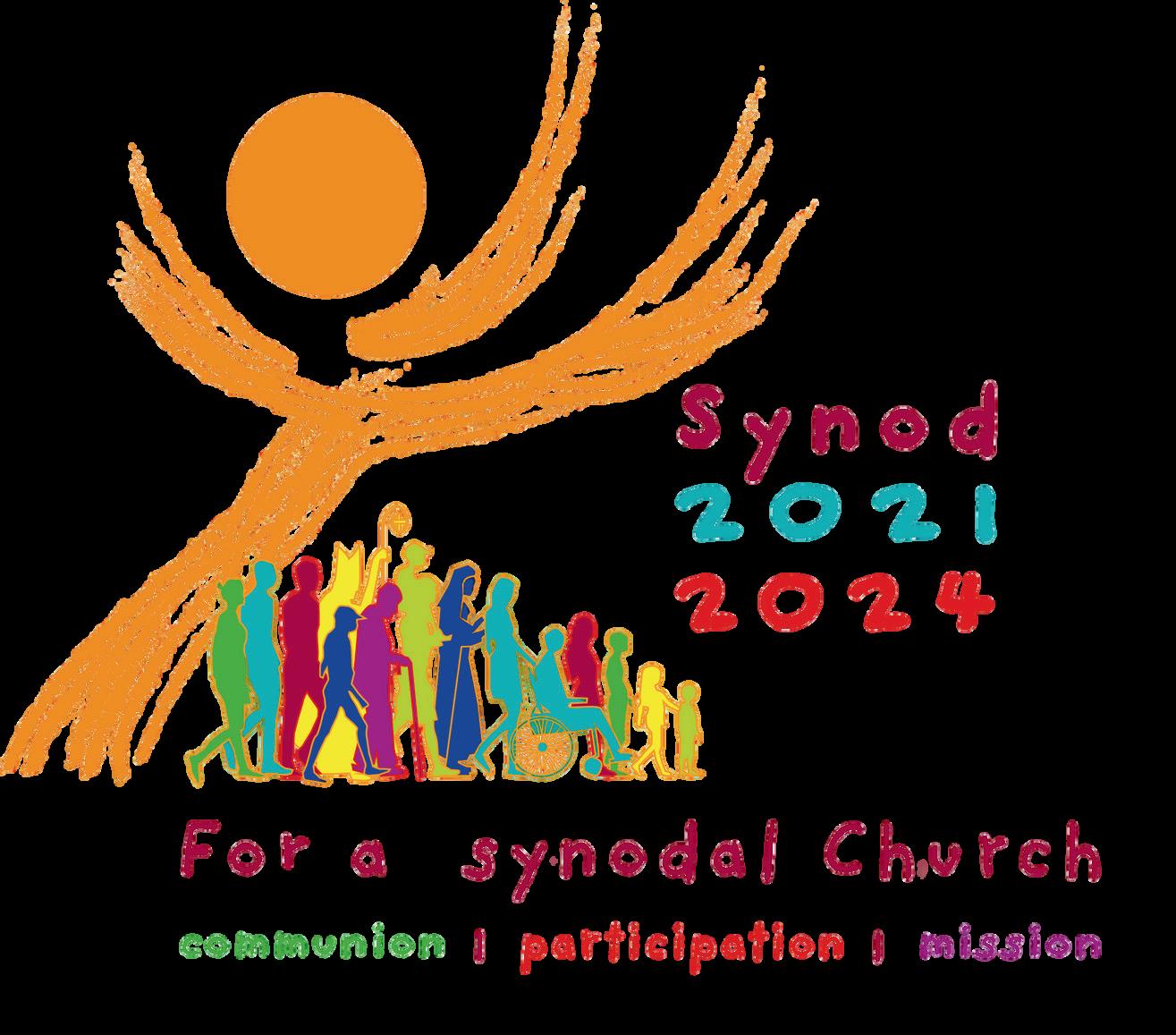
“To be a Synodal Church, we are required to open ourselves to a genuine relational conversion that redirects each person’s priorities, and we must once again learn from the Gospel that attending to relationships is not merely a strategy or a tool for greater organisational effectiveness” (No. 50).
Throughout the global consultation and the conversation in the Spirit that took place in the Synod gatherings themselves, we heard the cry of the people of God, who are yearning for a Church that is closer to them. We recognise that we flourish as individuals and as a Church when we can, when we are more relational – less bureaucratic and more like a loving family. (no.28).

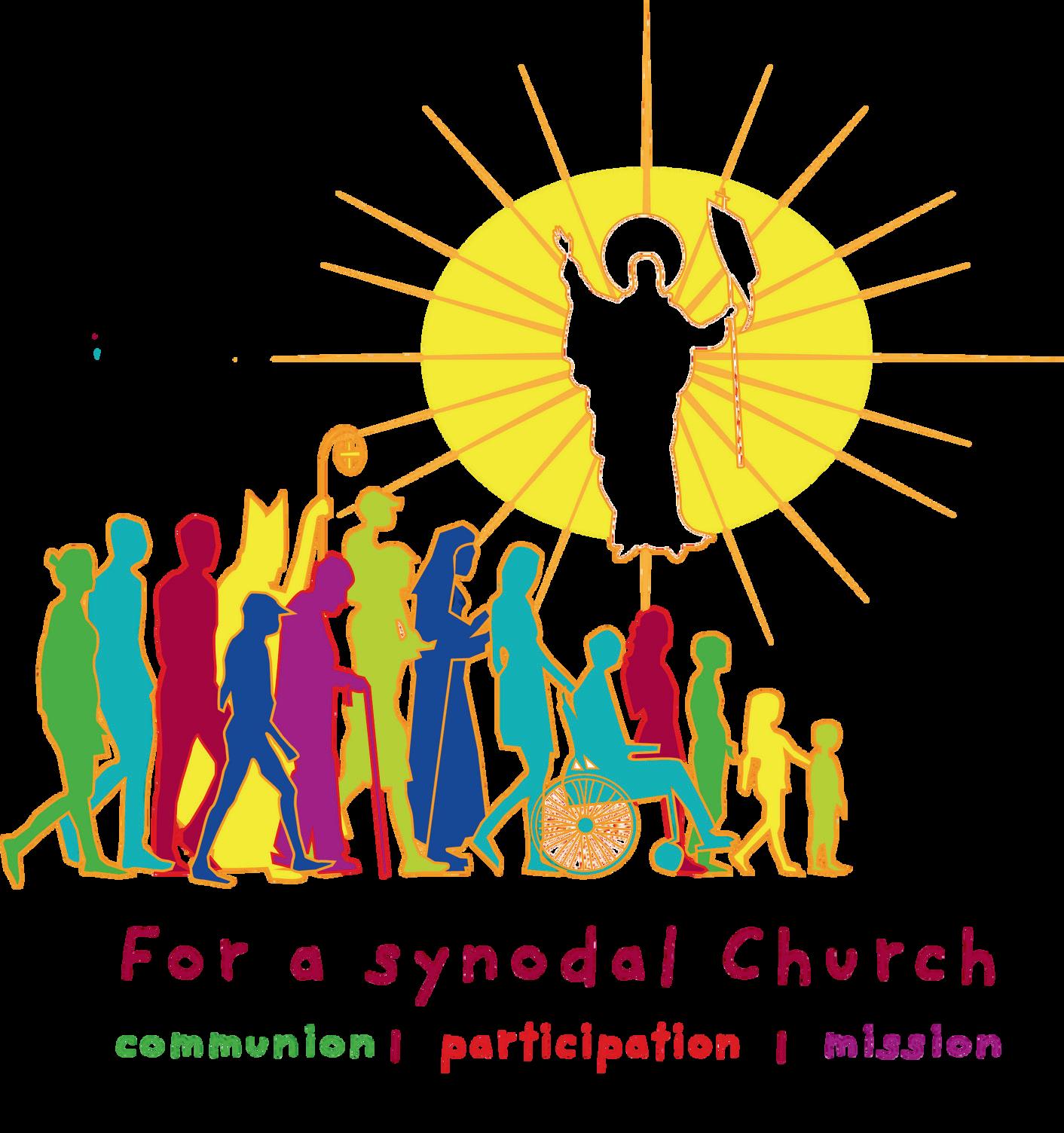
“We see the features of a synodal, missionary and merciful Church shining in full light in the Virgin Mary, Mother of Christ, of the Church and of humanity. She is the form of the Church who listens, prays, meditates, dialogues, accompanies, discerns, decides, and acts. From her we learn the art of listening, attentiveness to God’s will, obedience to God’s Word and a readiness to hear the needs of those who are poor and to set out along the path” (No. 29).
The practice of listening attentively, was encouraged by Pope Francis himself at the Synod on more than one occasion. We are called to listen to the people, the Word of God particularly as expressed through scripture, to the cry of the poor, and to the Holy Spirit. It must be noted that for a Synodal Church, listening is not passive – it is an active part of being relational, and it draws us into discernment. When we are truly listening, we are being attentive to the will of God in our life, enabling our missionary discipleship.

“Ecclesial discernment…is both the condition and a privileged expression of synodality, where communion, mission, and participation are lived” (No. 82).
Being relational and listening by themselves could be markers of any gathering of people, however for a Synodal church the key marker for transformation would be discernment. It is in this space that we as a Church find our “paths for mission” (No.79) Discernment transforms communities into spiritual families, where the contribution of all is necessary. The final document outlines many ways we as a Church and the consultative bodies that form the necessary structure of our being, need to be accountable and transparent in our discernment, as well as the need for communal discernment within our hierarchical structure.
“Authority is inextricably linked to the mystery of the cross and the kenosis of Christ.... [A]uthority in the Church must be understood “as service to God’s people based on the power of the Cross” .... In this sense, the exercise of authority must be modelled on the kenotic example of Christ, “as a service that includes the willingness to practice self-renunciation” (No. 42).
With Christ as our ultimate example of self-emptying service and leadership, a Synodal Church can be nothing less. It is the self-emptying that occurs in a conversation in the Spirit, when one places their thoughts and hopes on the table and then, without claiming ownership or forcing their opinion on others, we engage the Spirit to lead discernment for the common good. It is the selfemptying of relinquishing authoritarian style leadership, decentralising this power and allowing local communities to make decisions for the pastoral needs of those people, without losing unity in our Catholic identity. Pope Francis himself has exemplified this self-emptying, decentralised authority. I am still in awe of his powerful decision not to publish an Apostolic exhortation following this Synod. As he related to us on the last evening after we approved the final document, Pope Francis said: “what we have approved is sufficient…. This is why I am making it immediately available to everyone. It is the reason I said that it should be published. In this way I wish to recognise the value of the synodal journey accomplished, which by means of this document I hand over to the holy faithful people of God.” In doing this Pope Francis modelled in a very public way, this Christ like form of leadership.
“With this document, the Assembly recognises, and bears witness that synodality, a constitutive dimension of the Church, is already part of the experience of many of our communities. At the same time, it suggests pathways to follow, practices to implement and horizons to explore. The Holy Father, who convened the Church in Synod, will instruct the Churches, entrusted to the pastoral care of the Bishops, how to continue our journey supported by the hope that “does not disappoint us” (Rom 5:5).” No. 12
Now, as we celebrate this Holy Year, we are being particularly drawn into hope and asked to implement the learnings of the synodal journey. It has been my experience as I have made my way around various communities to share my story, there is still skepticism and hesitancy regarding a Synodal Church. Media and critics over the past three years have planted doubt and even suspicion in the minds of the faithful. May I encourage you, as leaders in our local communities of faith, to recognise your key place in the Synodal Church. You have distinct gifts and skills needed to form our people. By your very nature as teachers, you have been instinctively living synodally. I recommend the spiritual meditations of Cardinal Timothy Radcliffe OP, which are freely available online to give further insight. You might also like to take the time to read the final document of the Synod – perhaps with a group of friends. Discuss what you are reading and look at ways of implementing the findings.
This is an exciting time for our Church. The Holy Spirit has been weaving her way through each encounter and drawing us closer to the heart of Jesus. My prayer for you, as it was for all the Members of the Synod, that we may continue to joyfully dance with the Spirit, expressing ourselves as people of hope. May our hearts be a place of encounter and radical hospitality for the Lord, a place for Jesus to call home. And with that ultimate love in our hearts, may we be emboldened to express this gift to all of God’s people, all who are welcome and called to part of this great mission.
Kelly was an Oceania delegate the recent Synod on Synodality in Rome. Kelly Paget
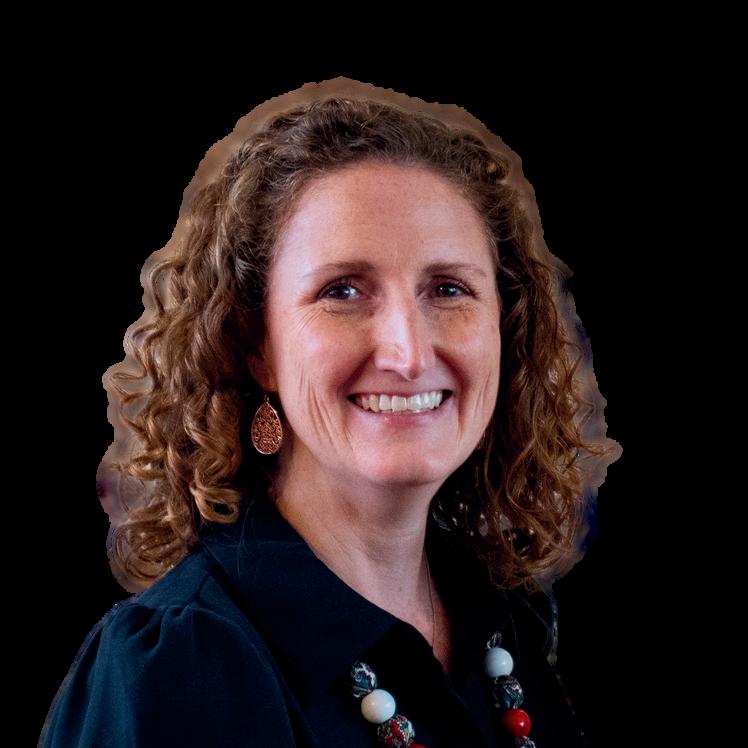


As we journey through the joyous season of Easter, anticipating the arrival of the Holy Spirit at Pentecost, we invite you to our upcoming Reflection Days. These special days are designed for the spiritual nourishment and development of our dedicated Catechists, offering a precious opportunity to pause, reflect, and deepen your faith. Take time out of your busy schedule to immerse yourself in contemplation on the post-Resurrection journey of Jesus, gaining renewed inspiration and strength for your vital ministry.
Beyond personal reflection, our Reflection Days provide a wonderful chance to connect and network with fellow Catechists from across our community. Share experiences, exchange ideas, and build supportive relationships with others who share your commitment to faith formation. This time, we are also delighted to extend a warm invitation to friends and family members of our Catechists to join us. Come and experience the enriching atmosphere and shared spiritual growth together.
Email us at registrations@bbcatholic.org.au or call 8379 1643 to register. Spaces are limited so don’t delay!

Journey through the Season of Easter towards the coming of the Holy Spirit at Pentecost as we reflect on the postResurrection journey of Jesus.
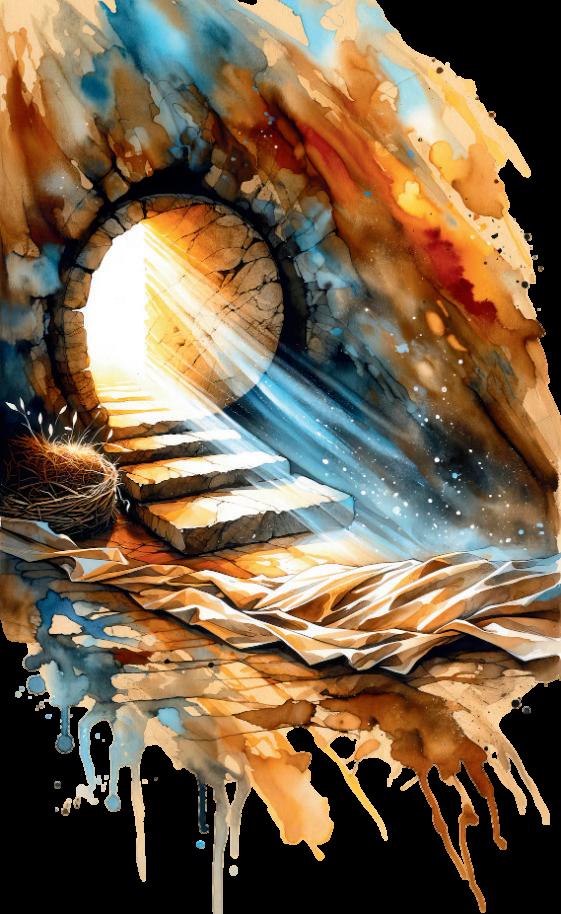
Morning Tea and Lunch Provided Registration oneweek prior to each event registrations@bbcatholic.org.au 02 8379 1643

9:45am–2:00pm Friday9May
Magnificat Room
Our Lady of Dolours Parish, Chatswood
Mass is celebrated in the Parish at 9:00am
9:45am-2:00pm Monday19May
Parish Centre
Our Lady of the Rosary Parish, The Entrance Communion Service is celebrated in the Parish at 9:00am
OpentoCatechistsandfriends. Bookearlyasspacesarelimited.
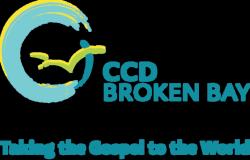



To celebrate the Year of Hope in the SRE classroom, CCD has prepared a “Pilgrimage Kit” for catechists – one for every SRE class in the diocese. These kits have been delivered to your Parish Catechist Coordinator for distribution.
The idea of a classroom pilgrimage is to allow the students to experience a spiritual journey across the year which will seek to form them as pilgrims of hope.
A Pilgrimage Poster – a chart which follows a pathway (pilgrimage) which contains challenges for the students along the way. The chart is A2 size and has been designed to fold into four (A4 size) so it can be stored with your student activity books in the classroom.
Notes for the Catechist – which provide background to help catechists explore the concepts of pilgrimage and hope.
Suggested challenges for the student - these are only suggestions, and they are age-appropriate for primary school children.The challenges have been aligned with the discipleship responses in our curriculum. You know your students best, so feel free to brainstorm ideas with them and set your own challenges. This way the students will have some ownership of the pilgrimage. Be sure that they are achievable for the students and age appropriate. You will need 10 challenges to be achieved across two or more terms.
Stickers of the Year of Hope mascots – Luce and Santino.These stickers will be used to mark the progress of the pilgrimage on the poster as the students, or some of them, complete the challenges.
A Prayer Card in the form of a bookmark – one for each child in your class. You might like to distribute these at the beginning of the pilgrimage or at the end. You may even decide to keep it as a Christmas gift.
Please Note: Your Parish Coordinator also has additional activities which could be used in the classroom, e.g. Year of Hope colouring pages; Finger Labyrinth activity to slow down to spend time with God; and a Pilgrim Shell activity –shells are one of the symbols used to mark the way for pilgrims.
To begin the Year of Hope Pilgrimage, CCD has created a lesson plan to introduce students to pilgrimage and hope. It includes a PowerPoint, colouring sheets, a worksheet for brainstorming challenges, and a suggestion to share the students’ work in the parish. Your Parish Coordinator has the resources, or you can access them here: https://www.bbcatholic.org.au/mission/ccd/resources or email ccdadmin@bbcatholic.org.au and Maricel will send them to you.
The pilgrimage is designed to run over two terms (or slightly longer), with one of the ten challenges introduced every two weeks. Check in with students before marking off a challenge and moving on. If even one student shares how they met the challenge, mark it off with a sticker and proceed to the next.

After the first lesson, it only takes a few minutes each week to check in, add a sticker, and present the new challenge. Keep it fun and engaging for the students.
Pray the Year of Hope prayer weekly—at the beginning or end of your lesson.
You might like to use an additional activity, such as the Pilgrim Shell, to help students slow down and reflect more deeply. Your Parish Coordinator has the templates, or contact Maricel at ccdadmin@bbcatholic.org.au or 02 8379 1638 and she can post printed templates to you. Please allow time for postage.


